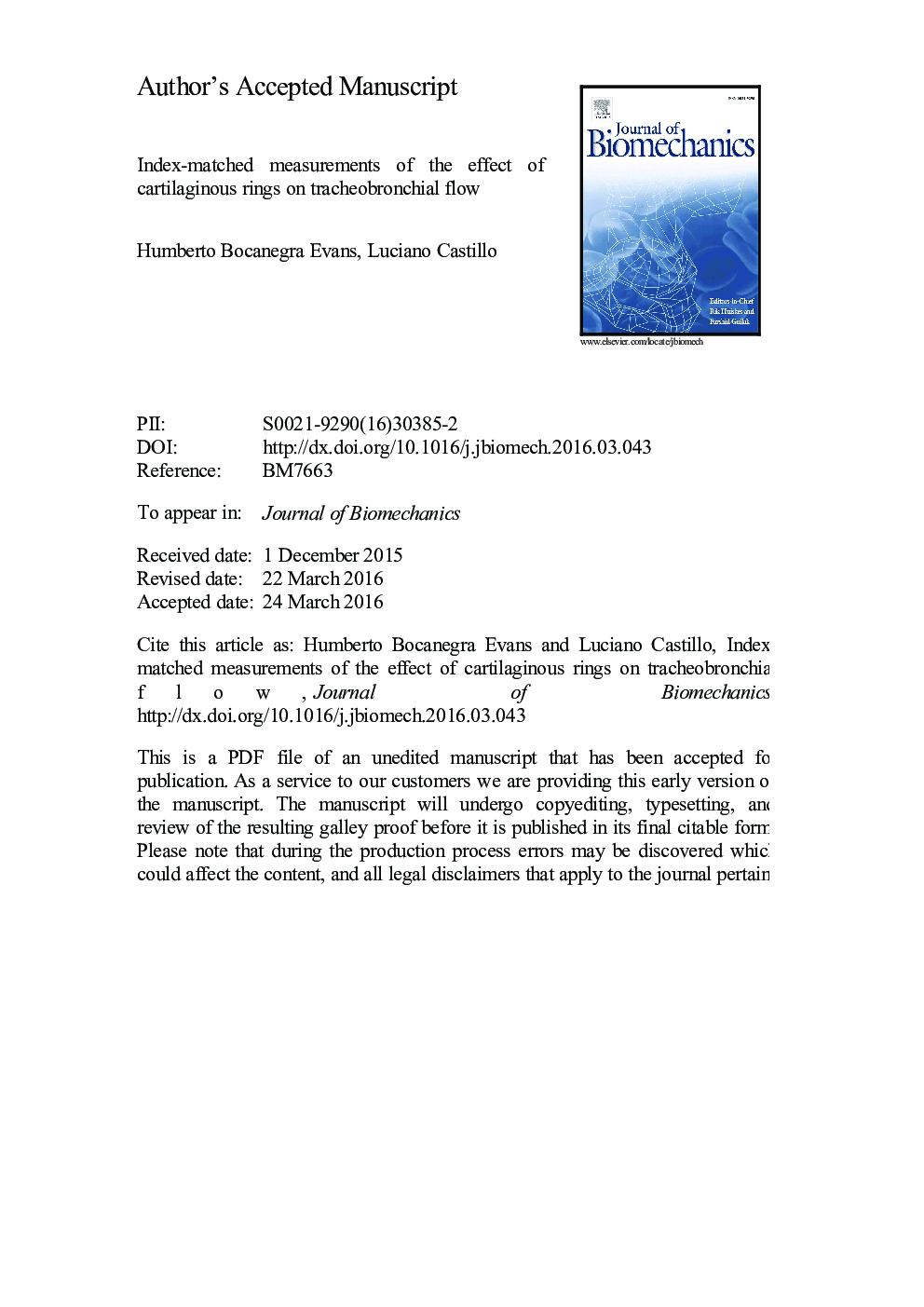| Article ID | Journal | Published Year | Pages | File Type |
|---|---|---|---|---|
| 10431052 | Journal of Biomechanics | 2016 | 24 Pages |
Abstract
We present a comparison of the flow characteristics in an idealized smooth trachea model and a second model which has a roughness simulating cartilaginous rings. We use refractive index-matched particle image velocimetry (PIV) to measure the velocity field in a two-generation model of the trachea and main bronchi. The flow rate has a trachea-based Reynolds number Re=2800, which is comparable to a resting state. Our results show considerable differences between both cases, the most important of which is the size and magnitude of recirculation zones at the inlet of both bronchi. The smooth case shows a larger separation bubble at the bronchi entrance, which may retain aerosols and have different effects on particles of different sizes. Furthermore, the smooth case displays a higher vorticity along the bottom walls of the bronchi, while a higher vorticity is seen along the trachea walls in the ׳ringed׳ model. These findings suggest that modeling the trachea and main bronchi as smooth tubes may not be justified, since the flow conditions in lower generations will be affected by these differences.
Keywords
Related Topics
Physical Sciences and Engineering
Engineering
Biomedical Engineering
Authors
Humberto Bocanegra Evans, Luciano Castillo,
